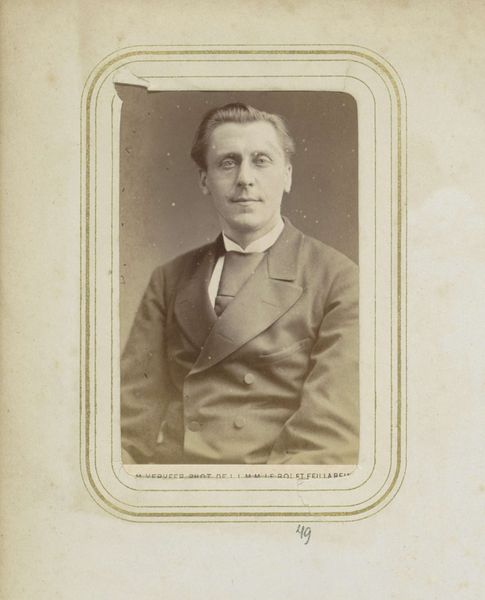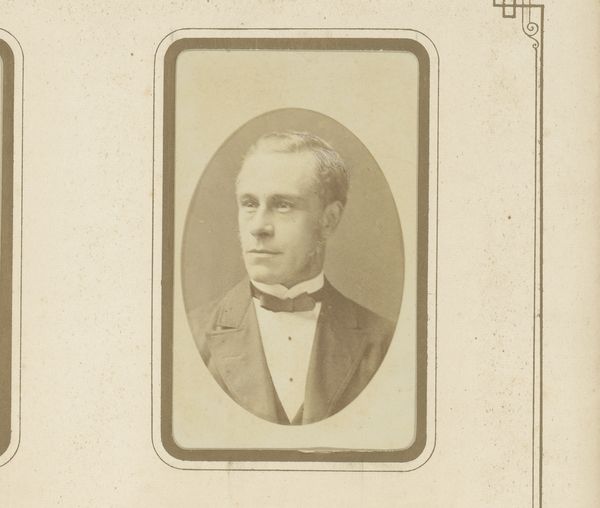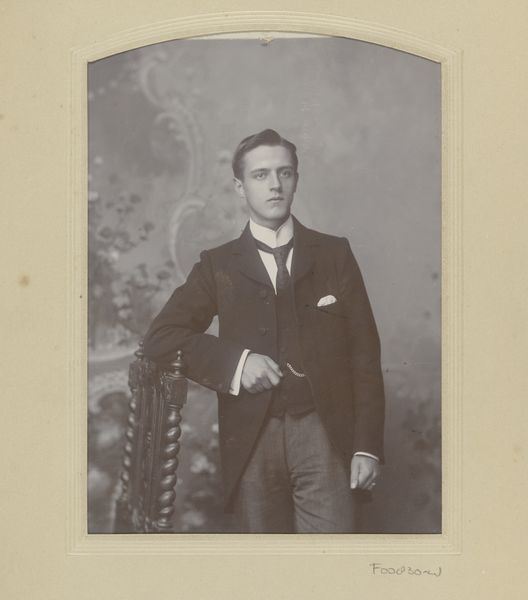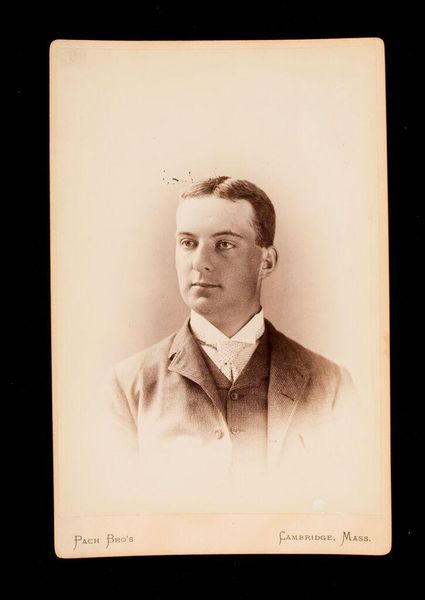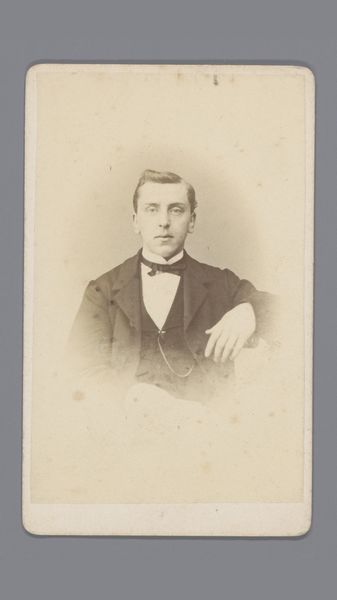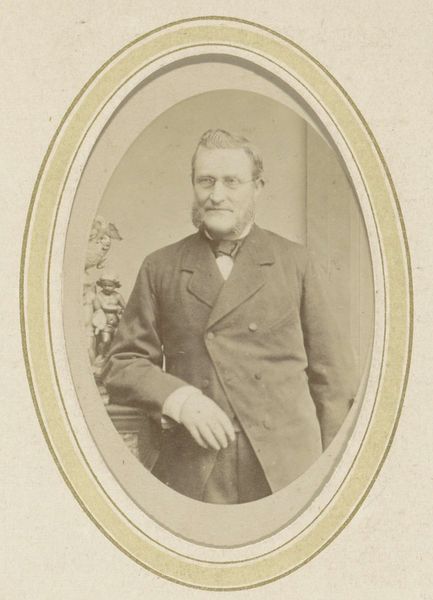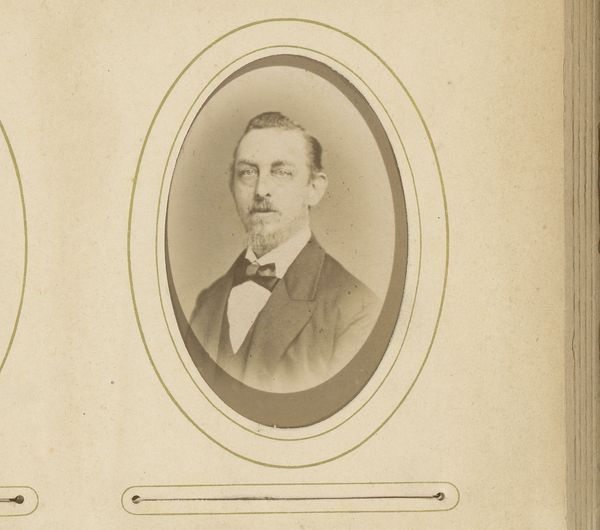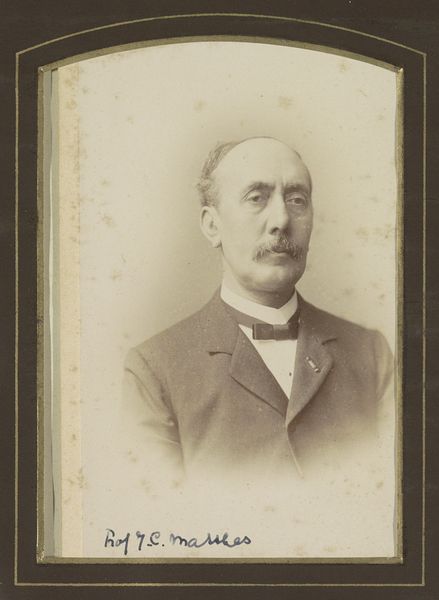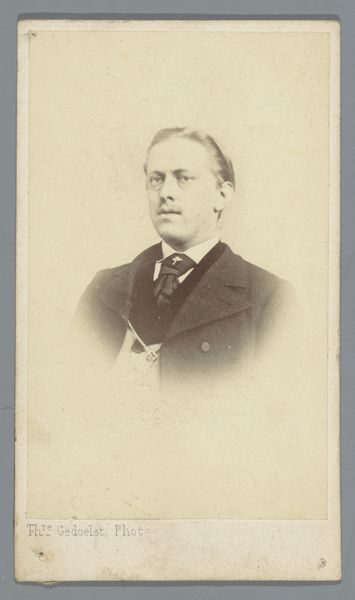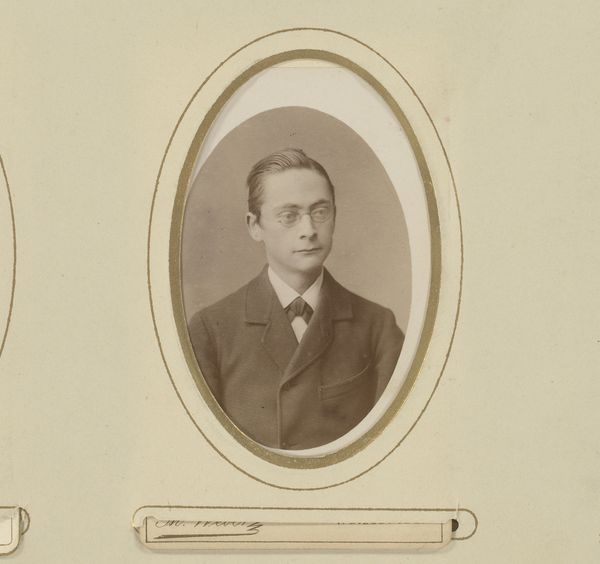
daguerreotype, photography
#
portrait
#
16_19th-century
#
daguerreotype
#
photography
#
historical photography
#
19th century
Dimensions: 14 × 9.9 cm (image); 16.5 × 10.8 cm (card)
Copyright: Public Domain
Curator: This haunting piece is titled "Untitled (Portrait of Seated Man)," an anonymous daguerreotype photograph likely taken in the 1880s or 1890s, now residing here at the Art Institute of Chicago. What strikes you first about it? Editor: There’s a melancholic stillness, a captured breath of the late 19th century. He holds that piece of paper, looking right at us but almost past us, too. What was the context of photography at that time, beyond personal mementos? Curator: Well, portrait studios thrived on providing affordable images for the burgeoning middle class. It was an act of democratization; having your likeness rendered, formerly the domain of the wealthy and painted, now accessible. Note the suit, the bow tie, the overall presentational formality. This speaks volumes about the aspirational values of the time and photographic craftsmanship becoming available. Editor: Yes, absolutely. But let’s not romanticize. The sitter's expression, even through the veneer of bourgeois presentation, seems to hint at anxieties—of labor, perhaps? Of social climbing in a period of massive upheaval driven by industrialization? Curator: Possibly. The technology of daguerreotypes itself is worth noting, involving labor-intensive processes, creating a direct positive image on a silvered copper plate, demanding highly skilled photographic studios and chemically sensitive preparations. The materiality, if you like, of photographic production dictated its possibilities and distribution in this period. Editor: And who gets access to this technology, these resources? Portraiture also involved questions of who had the privilege of having their identity documented. Who decides who's worthy of visibility and remembrance? Was it equally available across race and class at that moment? Surely not. Curator: A powerful point, and that needs to be accounted for. He’s poised with his letter and attire—a manufactured identity, but for whom? What power dynamics shaped that performance? Editor: Ultimately, a reminder that no image is neutral, and this “Untitled” piece opens a fascinating portal for thinking about material history, class dynamics, and the carefully crafted visual performances that defined a whole era. Curator: Absolutely. Its quiet power, mediated through careful material processes, persists and invites ongoing reflection today.
Comments
No comments
Be the first to comment and join the conversation on the ultimate creative platform.
